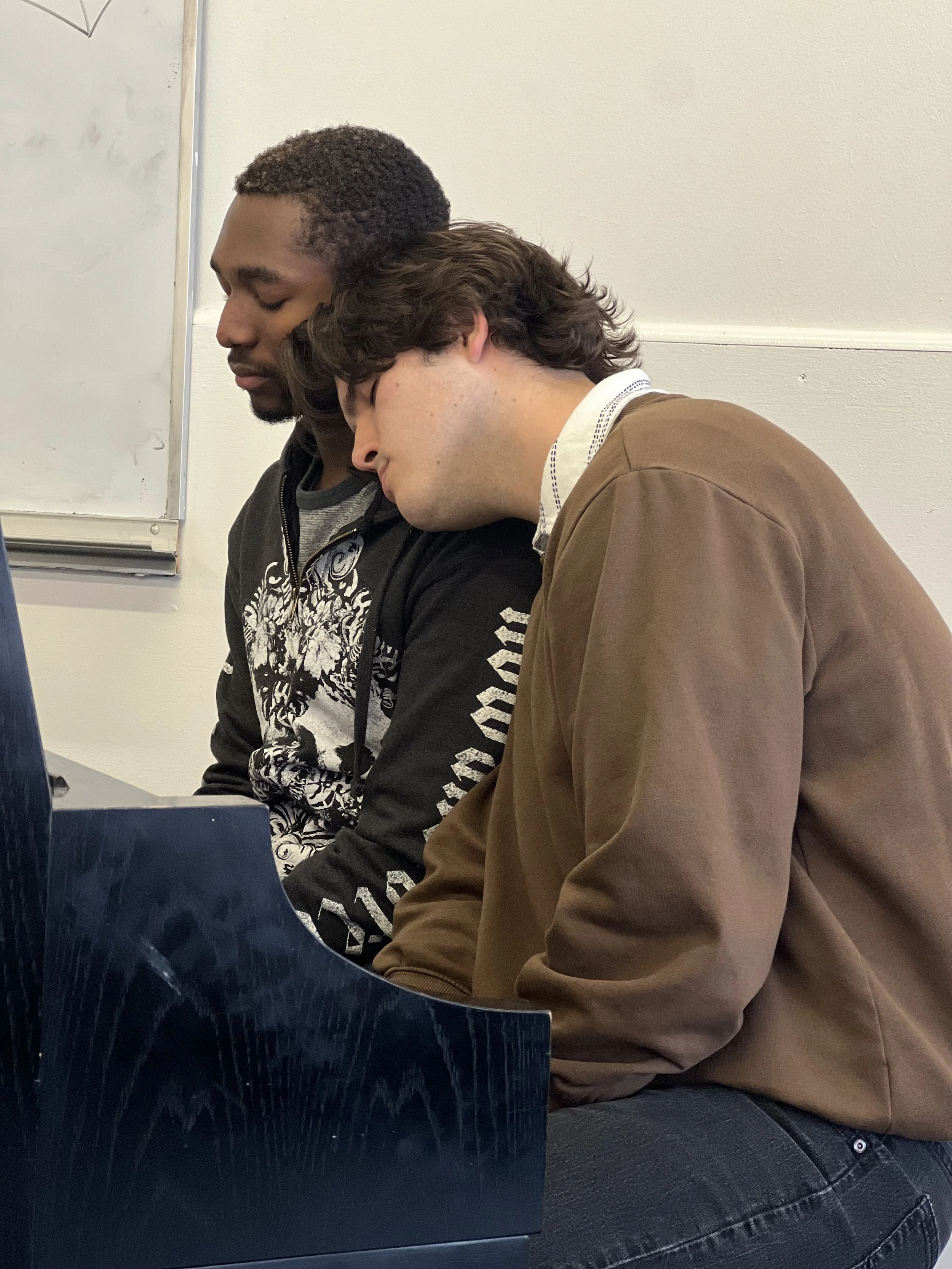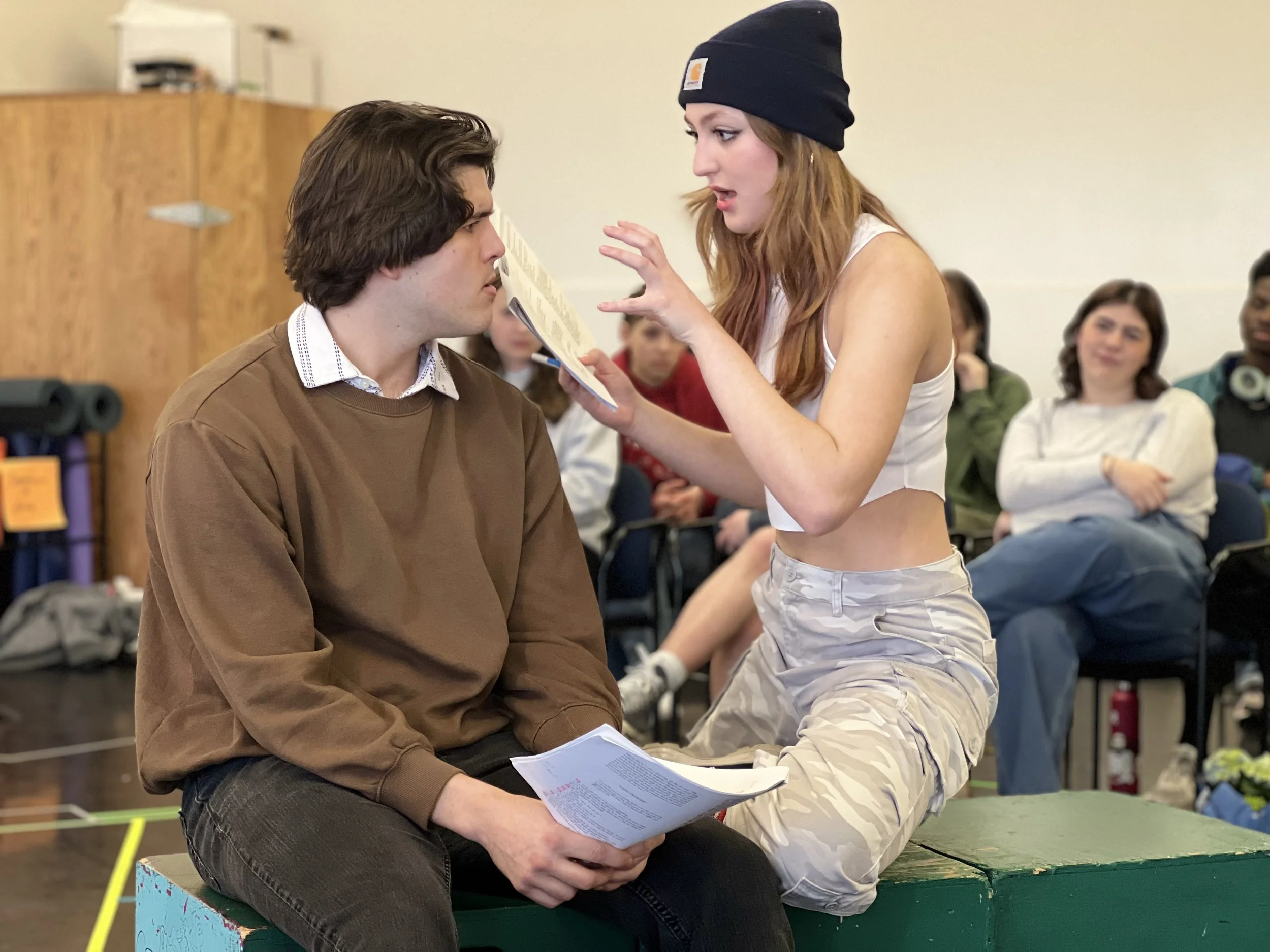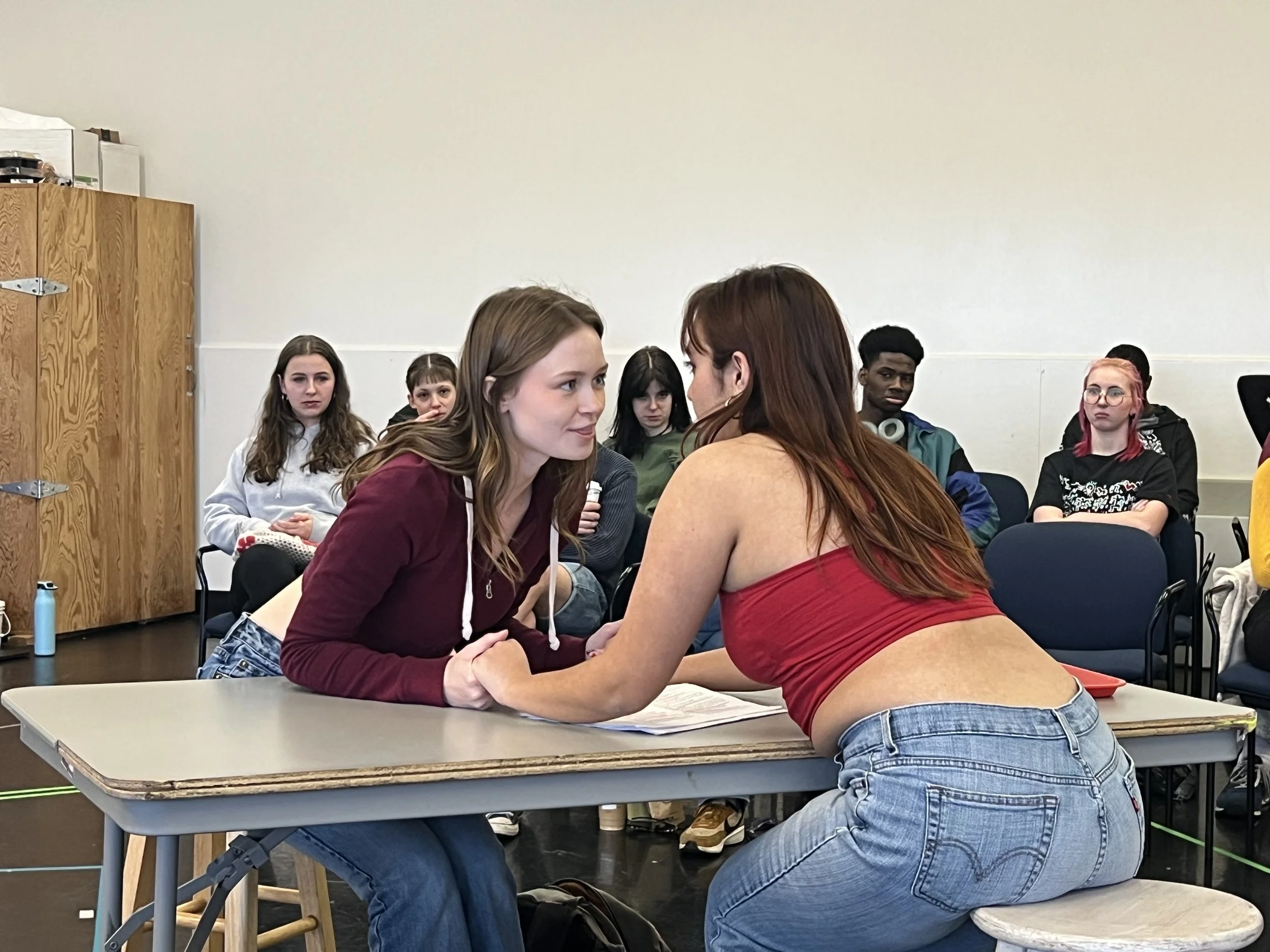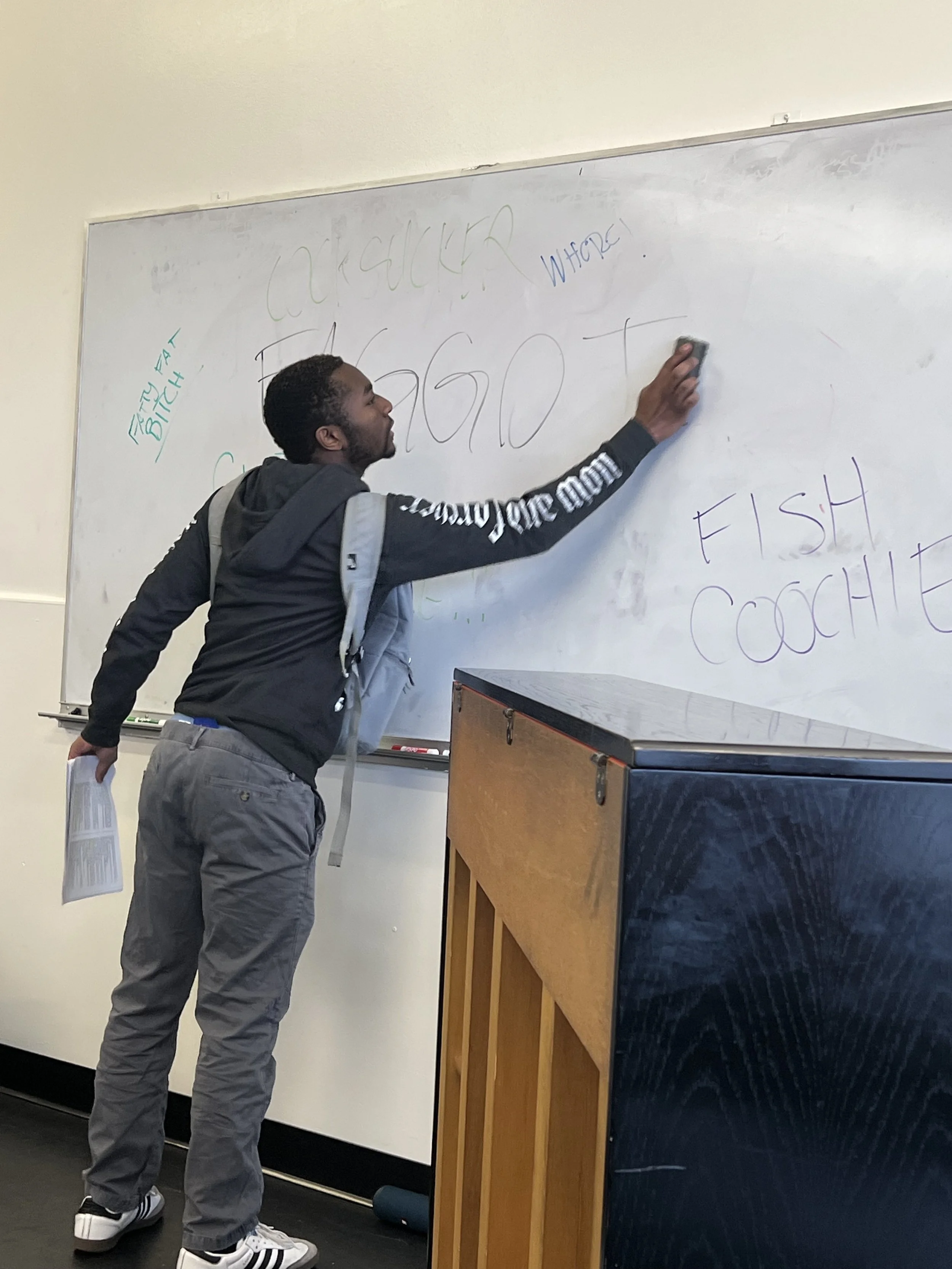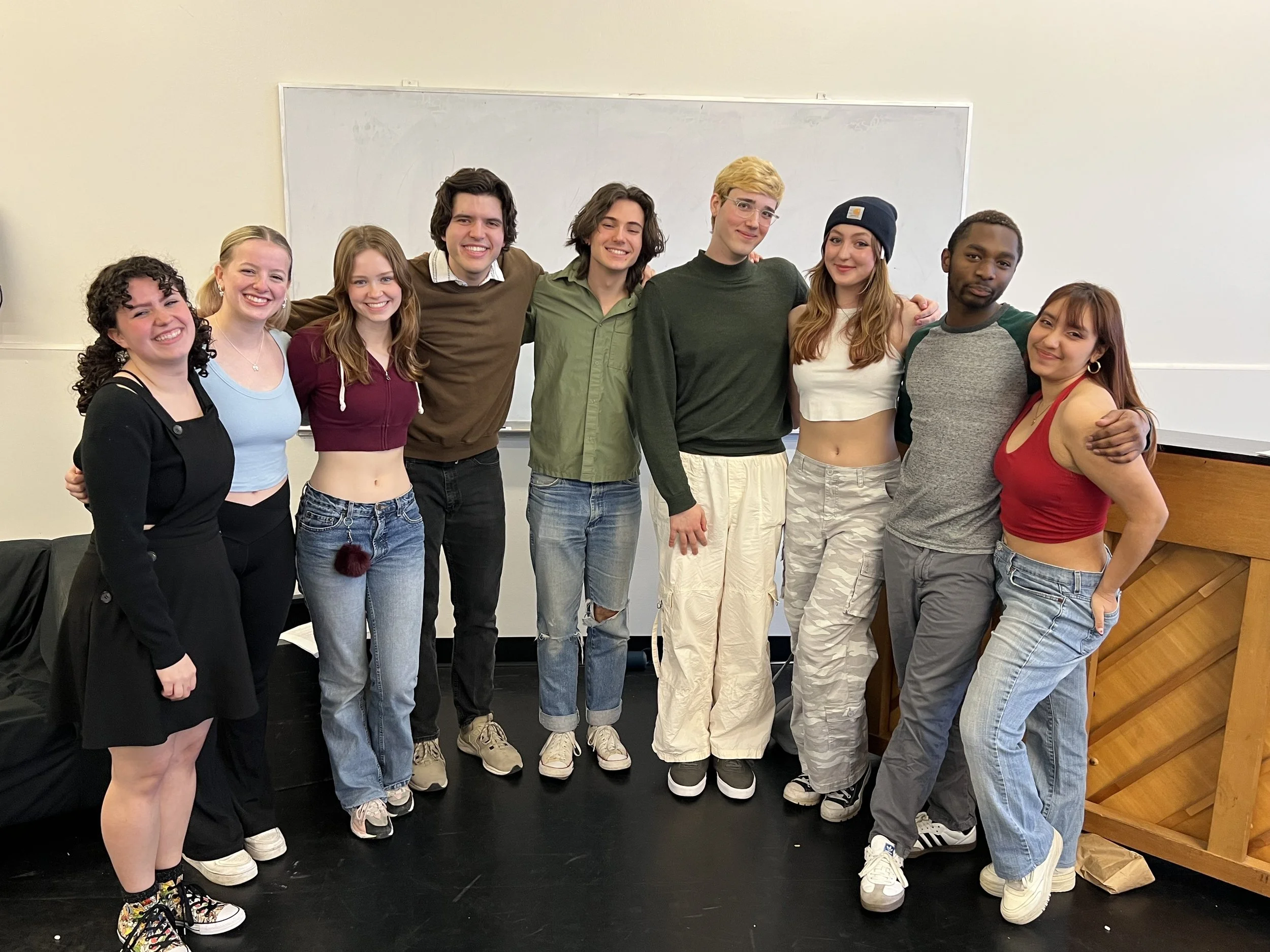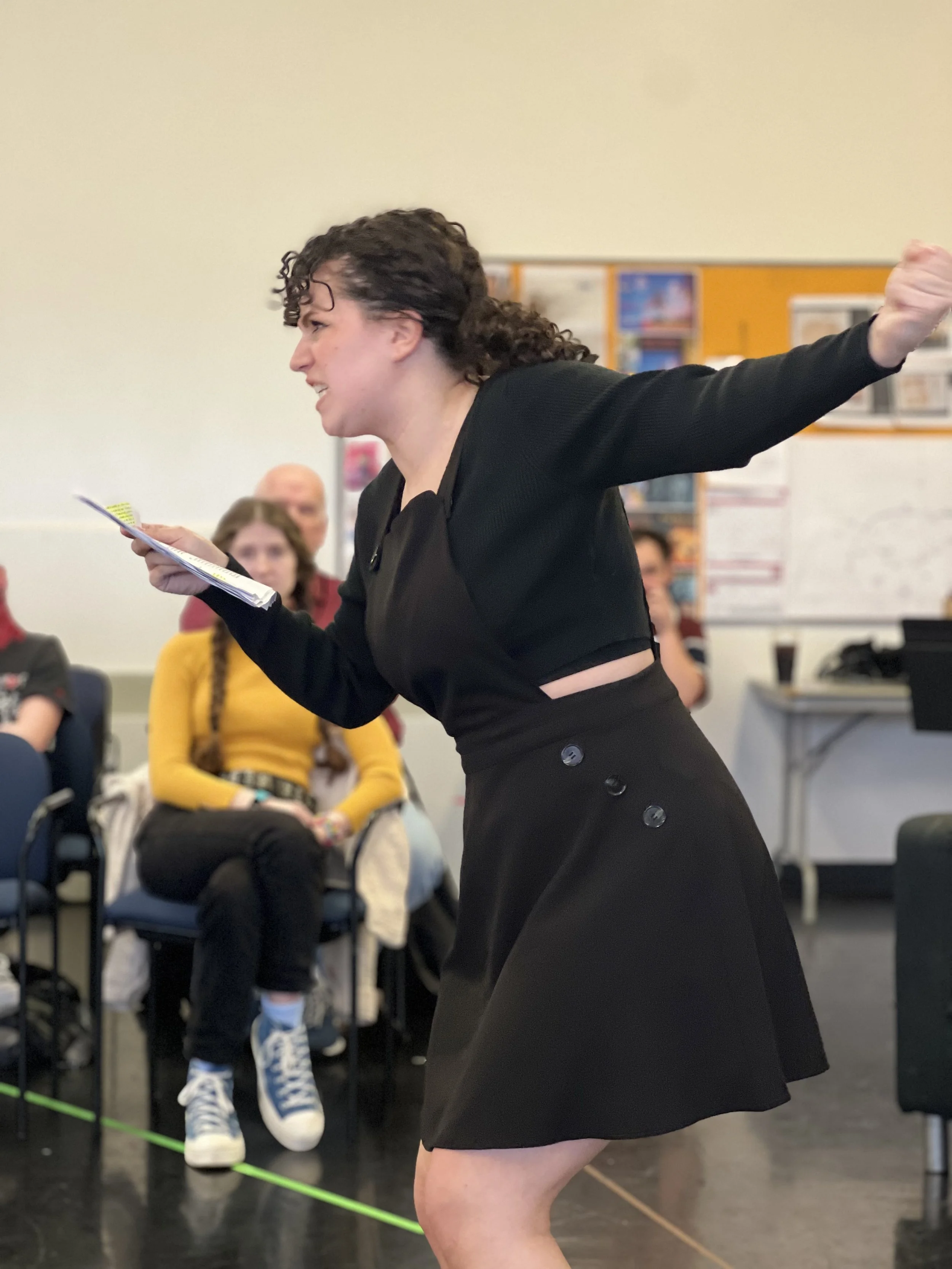Sister Mary Ignatius Explains It All For You
My sophomore year as a directing major at Webster University, we were tasked with directing two staged readings of plays we were interested in over the course of the year. We had a mere three hours on a single day to stage the entire show, with a public performance later that afternoon/evening. I was inspired by an incredible Dramatists Guild interview between Christopher Durang and David Lindsay-Abaire to take on Christopher Durang’s cynical but heartfelt one-act, Sister Mary Ignatius Explains It All For You. My vision was to create an immersive experience for the audience in a non-traditional theatre space, so I reserved a classroom in Webster Hall, the oldest building on campus and former chapel. In the first half of the show where Sister Mary Ignatius is lecturing about the tenets of Catholicism, the audience sat like students in the classroom, taking notes and submitting questions on notecards. When the other characters entered to do their make-shift performance of the Nativity story, the audience had to get up and move their tables and chairs to the periphery of the room to create a performance space that was utilized for the rest of the show. The non-traditional space was challenging to stage, but it was so much fun to execute and really put the audience in the middle of the action. The cast was incredible and we had so much fun bringing these eccentric characters to life.
Dog Sees God
Dog Sees God was the most fun experience I’ve had in my time at WebCo. I read this play my freshman year of college and it really resonated with me. My “way in” initially was the homophobia mirroring the way I was treated in middle school, but I truly think every plot line in this show has personal resonances for me. However, Dog Sees God is, admittedly, an incredibly inflammatory and sometimes alienating piece. Slurs are rampant and the play hits on most of the hot-button teen topics of the early 2000s. In my opinion, the trap of this show is that it can easily become inflammatory for the sake of being inflammatory, reducing these humans to caricatures of teen angst: Beethoven as the tortured gay kid, CB as depression personified, Matt as the closeted homophobe, and Marcy and Tricia as the homoerotic straight girls struggling with eating disorders. In my portrayal of these characters, I wanted to present them as real teenagers with joys, insecurities, and flaws, abandoned by a school system and greater society that fails to take their struggles seriously, until it is too late. My greatest compliment from this performance was my professor coming up to me afterwards to say that he had never liked the show before, but my incredible cast and I were able to bring out a heart in the piece he hadn’t seen.
From a staging perspective, I decided to experiment with a tennis-court style staging, with audience on two sides of the performance space, emulating a school hallway. I also used a central whiteboard: in the opening moments, the characters entered dancing to the famous Charlie Brown theme song; then, they gradually started fading away to write insults on the whiteboard, escalating to Matt writing “F*GGOT” as Beethoven entered.

